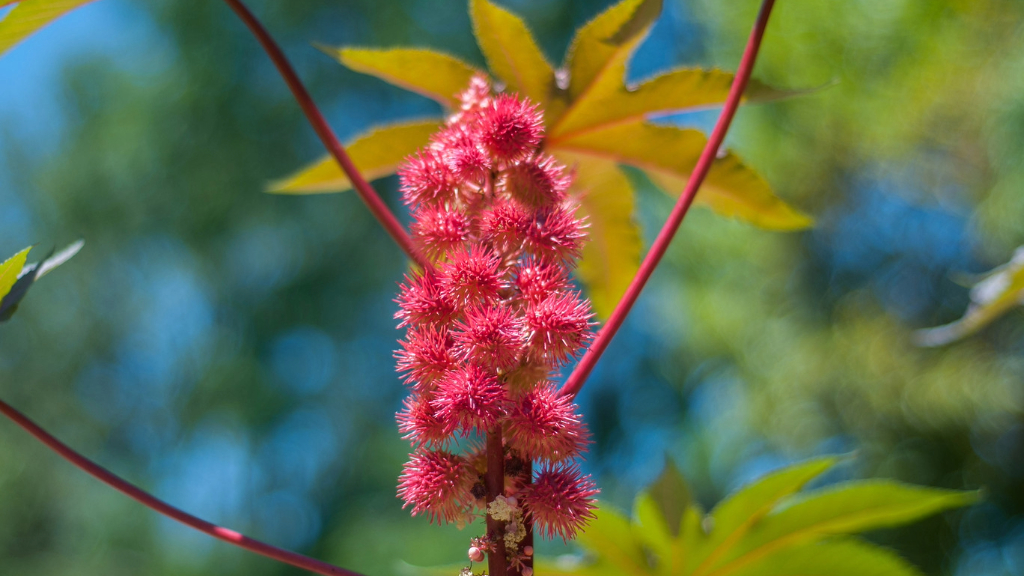History Of Gibsonii Castor Bean


One minute you're planting it, the next it is blazing in the garden, tall and full of drama. The Gibsonii castor plant (Ricinus communis var. gibsonii) has been around since the dawn of time, cultivated for its castor bean oil. But even for gardeners who have no immediate use for castor oil fall for this fast growing beauty. The enormous leaves and dramatic flower spikes of the Gibsonii castor bean plant make this heirloom annual a "must-grow."
Castor Bean Plant History
The history of the castor bean plant is a long one. If you get a copy of the 1896 catalog from R. & J. Farquars seed house, you'll find many varieties of the castor bean plant listed. In fact, the plant was cultivated in English gardens from at least the 16th century. And the ancient Egyptians grew it more than 4,000 years ago. They used it as a source of the castor oil they burned in lamps. In this country, castor bean plants were also grown to produce castor oil. The U.S. military used the oil in aircraft lubricants as well as in the production of explosives. Americans also used castor oil in making soaps, linoleum, nylon, paints and electrical insulations. It was also a popular medicine in the first half of the twentieth century.
Gibsonii Plant Information
Today, gardeners cultivate this heirloom plant because it is a fast growing annual. Castor bean plant is capable of rising to 8 feet tall in a very short time in the wild. However, the variety Gibsonii is more compact, growing to 5 feet in height. Whichever feature you choose to focus on, you'll find Ricinus communis var. gibsonii to be a remarkable plant. It's truly a dramatic addition to any garden.
Each huge palmate leaf grows to 30 inches across and resembles a star, with up to 11 deeply incised lobes. The foliage is a gorgeous, dark, metallic shade of red. The plant's stems are also red, and provide a stunning contrast to the ivory blossoms. They appear in clusters in late summer, followed by eye-catching seed pods of scarlet red. If you want to grow Gibsonii castor bean plants, sow the seeds in a site with direct sun and deep, rich soil. Protect the plants from winds that might shred its beautiful leaves. Irrigation is important, and you'll want to water the plants regularly.
Sign up for the Gardening Know How newsletter today and receive a free copy of our e-book "How to Grow Delicious Tomatoes".

Teo Spengler is a master gardener and a docent at the San Francisco Botanical Garden, where she hosts public tours. She has studied horticulture and written about nature, trees, plants, and gardening for more than two decades, following a career as an attorney and legal writer. Her extended family includes some 30 houseplants and hundreds of outdoor plants, including 250 trees, which are her main passion. Spengler currently splits her life between San Francisco and the French Basque Country, though she was raised in Alaska, giving her experience of gardening in a range of climates.